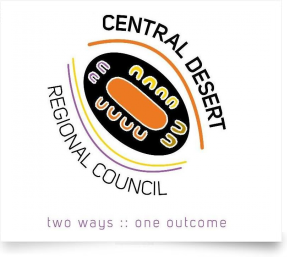Central Desert Region
 From Wikipedia - Reading time: 7 min
From Wikipedia - Reading time: 7 min
This article needs additional citations for verification. (March 2020) |
| Central Desert Region Northern Territory | |||||||||||||||
|---|---|---|---|---|---|---|---|---|---|---|---|---|---|---|---|
 | |||||||||||||||
| Coordinates | 26°35′35″S 118°29′28″E / 26.5931°S 118.4911°E | ||||||||||||||
| Population | 4,208 (2018)[1] | ||||||||||||||
| • Density | 0.0149585/km2 (0.038742/sq mi) | ||||||||||||||
| Established | 2008 | ||||||||||||||
| Area | 281,312 km2 (108,615.2 sq mi)[1] | ||||||||||||||
| Council seat | Alice Springs (outside LGA) | ||||||||||||||
| Region | Alice Springs Region | ||||||||||||||
| Territory electorate(s) | Stuart | ||||||||||||||
| Federal division(s) | Lingiari | ||||||||||||||
 | |||||||||||||||
| Website | Central Desert Region | ||||||||||||||
| |||||||||||||||
The Central Desert Region is a local government area of the Northern Territory, Australia, administered by the Central Desert Regional Council (formerly Central Desert Shire). The council's main towns are Ti-Tree, Yuendumu, and Lajamanu. The Region covers an area of 281,312 square kilometres (108,615 sq mi) and had a population of 4,208 in June 2018.[1]
History
[edit]In October 2006 the Northern Territory Government announced the reform of local government areas.[2] The intention of the reform was to improve and expand the delivery of services to towns and communities across the Northern Territory by establishing eleven new Shires. The Central Desert Shire was created on 1 July 2008.
Elections of councillors were held on 25 October 2008. The President (Mayor) of the Central Desert Regional Council is Adrian Dixon and the Deputy President is Warren Williams since 28 August 2017.
Much of the council's area had been unincorporated, and several Community Government Councils were merged into the Central Desert Region. These were:
Changes to the NT Local Government Legislation in 2013 changed the names of Shire to Regional Councils and thus the Central Desert Shire became the Central Desert Regional Council with effect from 1 January 2014.[3]
Wards
[edit]The Central Desert Regional Council is divided into four wards, which is governed by 12 councillors:
- Northern Tanami (2)
- Southern Tanami (4)
- Anmatjere (4)
- Akityarre (2)
Localities and communities
[edit]Land within the Central Desert Region was divided in 2007 into bounded areas for the purpose of creating an address for a property. The bounded areas are called "localities", with those localities associated with Aboriginal communities being called "communities".[4][5]
Localities
[edit]- Anatye
- Anmatjere (part)
- Chilla Well
- Gurindji
- Hart
- Lake Mackay (part)
- Sandover (part)
- Tanami
- Ti-Tree
Communities
[edit]References
[edit]- ^ a b c "3218.0 – Regional Population Growth, Australia, 2017-18: Population Estimates by Local Government Area (ASGS 2018), 2017 to 2018". Australian Bureau of Statistics. Australian Bureau of Statistics. 27 March 2019. Retrieved 25 October 2019. Estimated resident population, 30 June 2018.
- ^ McADAM, ELLIOT (11 October 2006). "LOCAL GOVERNMENT BLUEPRINT FOR THE FUTURE ANNOUNCED". Territory Stories. Northern Territory Government. p. 1. Retrieved 15 October 2023.
The target date for implementation of local government reform in the Territory is July 2008
- ^ TOLLNER, DAVID WILLIAM (18 December 2013). "Local Government Act CHANGES TO LOCAL GOVERNMENT AREAS AND COUNCILS" (PDF). Northern Territory Government Gazette. Northern Territory Government. p. 3. Retrieved 26 April 2019.
with effect from 1 January 2014:
- ^ "Northern Territory localities and suburbs". Place Names Committee. Northern Territory Government. Archived from the original on 13 March 2018. Retrieved 25 April 2019.
- ^ "Central Desert". Place Names Committee. Northern Territory Government. Archived from the original on 13 March 2018. Retrieved 25 April 2019.
 KSF
KSF